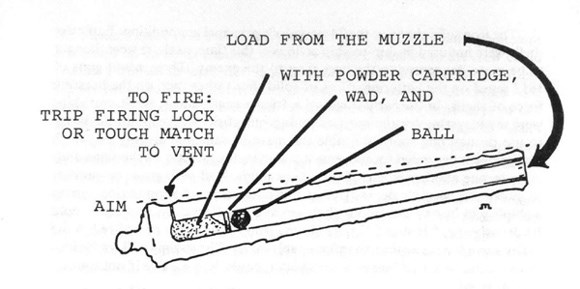Muzzle loading Gun Traditional Geocache
-
Difficulty:
-

-
Terrain:
-

Size:  (micro)
(micro)
Please note Use of geocaching.com services is subject to the terms and conditions
in our disclaimer.
The cache is placed just inside the Warrior Toy Museum front door. On the left as you walk in. The Museum is Open daily from 10H00 to 15H00. (Times are subject to change with out notice) The is a small entry fee to the Museum, no charge if you only there for the Cache. There is no need to interact with the staff. The Cache is placed with permission by Percy van Zyl, curator and Owner of the museum. Please take a pen with you.

The muzzle-loading rifle was introduced into service in ships of the Royal Navy, after experimentation with alternative armament systems, after the failure of the Armstrong 100-pounder breech-loaders installed in 1860. Until the middle of the 19th century Royal Navy warships had been armed with progressively larger smoothbore muzzle loading cannon. These had by then approached their limit in terms of armour penetration, range and destructive power. It was known that rifled ordnance provided more accuracy, a greater range and more penetrative power, which was the rationale behind the development and on-board shipping of the breech-loading cannon developed by the company owned by Sir William Armstrong. These weapons, however, were dangerously prone to failure, frequently explosively, and an alternative armament became urgently necessary. An initial attempt at an alternative was the 100-pounder smoothbore Somerset cannon, which, while it was an improvement over previous smoothbore guns of lesser calibre, could not penetrate armour of thicknesses currently being shipped by British or foreign battleships. The type of gun finally adopted was a muzzle-loading weapon which fired projectiles with external studs which engaged with the rifling. This system was the "Woolwich" system; while it was possible with this system to fire shells at a higher muzzle velocity, and therefore with greater penetrative power, than before, the studs tended to shear, there was excessive wear of the gun liner, and the shells tended to wobble in flight. Furthermore, the muzzle velocity obtainable in these guns was no more than half of that obtained in interrupted screw breeched guns of the following century. There were several reasons for this: the shell could not be made to fit too closely into the bore of the gun, as it would not have been possible to ram it home; the velocity of a shell depends, among other factors, on the length of the gun barrel, and the need to load through the muzzle necessitated a short barrel so as to make the muzzle accessible to the loaders; later types of explosive were superior; and metallurgical techniques improved to allow a higher initial pressure in the breech of the gun.
Please don't upload any spoiler pictures of the cache or the hide, on geocaching.com or any other social networking sites. Thanks family Behrens.
Additional Hints
(Decrypt)
Lbh arrq gb chyy gur cva onpx naq gura eryrnfr gur cva gb sver gur pnaaba naq trg gur ybt. (erzbir pnc svefg)